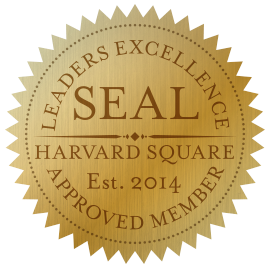The more information you can share with your organization about knowledge management the more apt they are in accepting it. This post explains the principles, history, and application of knowledge management in the workplace.
The words knowledge and management are two very broad concepts when separated. When the two words come together, it speaks of a concept that strives to organize information in a way that produces an advantage for an organization. While anyone would think that harnessing the knowledge of an organization is a positive thing to do, there are many who do not see the value of knowledge management. They may see this as a waste of time. This is true of many other disciplines like project management. Many see planning and assessing risk as time consuming. Therefore, they do not support initiatives that bring this change. In all honesty, change is the real issue.
What is Knowledge
The word knowledge is often confused for information or data. The online version of the Merriam-Webster dictionary defines knowledge as the following: Fact or condition of knowing something with familiarity gained through experience or association.
What is data and information? Both of these terms are a part of knowledge. Data is raw content, which by itself has no meaning or value.
When data is grouped together, it becomes information. For example, getting a temperature reading of the climate outside on one day is meaningless without other information to make a comparison.
Once a database is created, it becomes information because comparisons can be made. In terms of knowledge management, knowledge is information that is in context, producing an actionable understanding.
Back to our temperature scenario, when the temperature information is placed in context with say agriculture, then knowledge is created. For example, knowing that if temperatures fall below a certain point in January they tend to last for about a week. Orange farmers in Florida must determine if they are going to harvest early or take other precautions like heating the orchard. The decision will be based on how long oranges can withstand cold conditions at a certain temperature.
Organizations and companies hold and transfer data and information that can be placed into context allowing an actionable event or an understanding to occur.
What is Knowledge Management
Knowledge management is a program or system designed to create, capture, share and leverage knowledge towards the success of the organization. This is easier said than done because instituting a knowledge management program requires many changes and support at all levels of the organization. Furthermore, there are different forms of knowledge to contend with and understand.
Knowledge can be tacit or explicit, which requires different strategies to capture each type. Another challenge is to distill the practice of knowledge management into one neat concept.
A Brief History
The origins of knowledge management can be traced back to the late 1970s. Everett Rogers and Thomas Allen’s work in information transfer laid the foundation to the concept of how knowledge is created, implemented, and integrated throughout an organization.
In the 1980s, knowledge became a focal point to increasing the competitive edge for companies. People like Senge and Sakaiya discussed the advantages of creating learning and knowledge based organization. The primary object during this time was improving business in general.
In the 1990s, knowledge management was introduced into mainstream business management publications. Authors like Tom Stewart, Ikujiro Nonaka, and Hirotaka Takeuchi brought formality to the managing of knowledge. In the mid 1990’s, the Internet became the channel where knowledge management expanded greatly.
The history of knowledge management has many prominent theorists like Karl Wiig, Peter Drucker, and Paul Strassmann. From information technology to improving how an organization learns, knowledge management started in many areas of business. There is no one source of its history. Nonetheless, knowledge management has a history of producing the kind of change businesses desire in terms of improving the communication of knowledge in order to achieve successful outcomes.
Today, knowledge management has many applications and is useful in most any discipline in an organization.
Applications in the Workplace
Knowledge management can be applied to many areas of the organization. Remember that knowledge management is not only storing knowledge. The larger focus is on sharing. With this in mind, applying knowledge management in the workplace is nearly unlimited. Areas that can benefit from knowledge management are as follows:
- Corporate governance
- Staff training
- Operations
- Human resources
- Marketing
- Information technology
- Research and development
Applying knowledge management in any one of these areas will lead to improved communication and responsiveness to change.
This post is from December’s topic on Knowledge Management, which is also a course on our Mini-MBA program online from Harvard Square.




